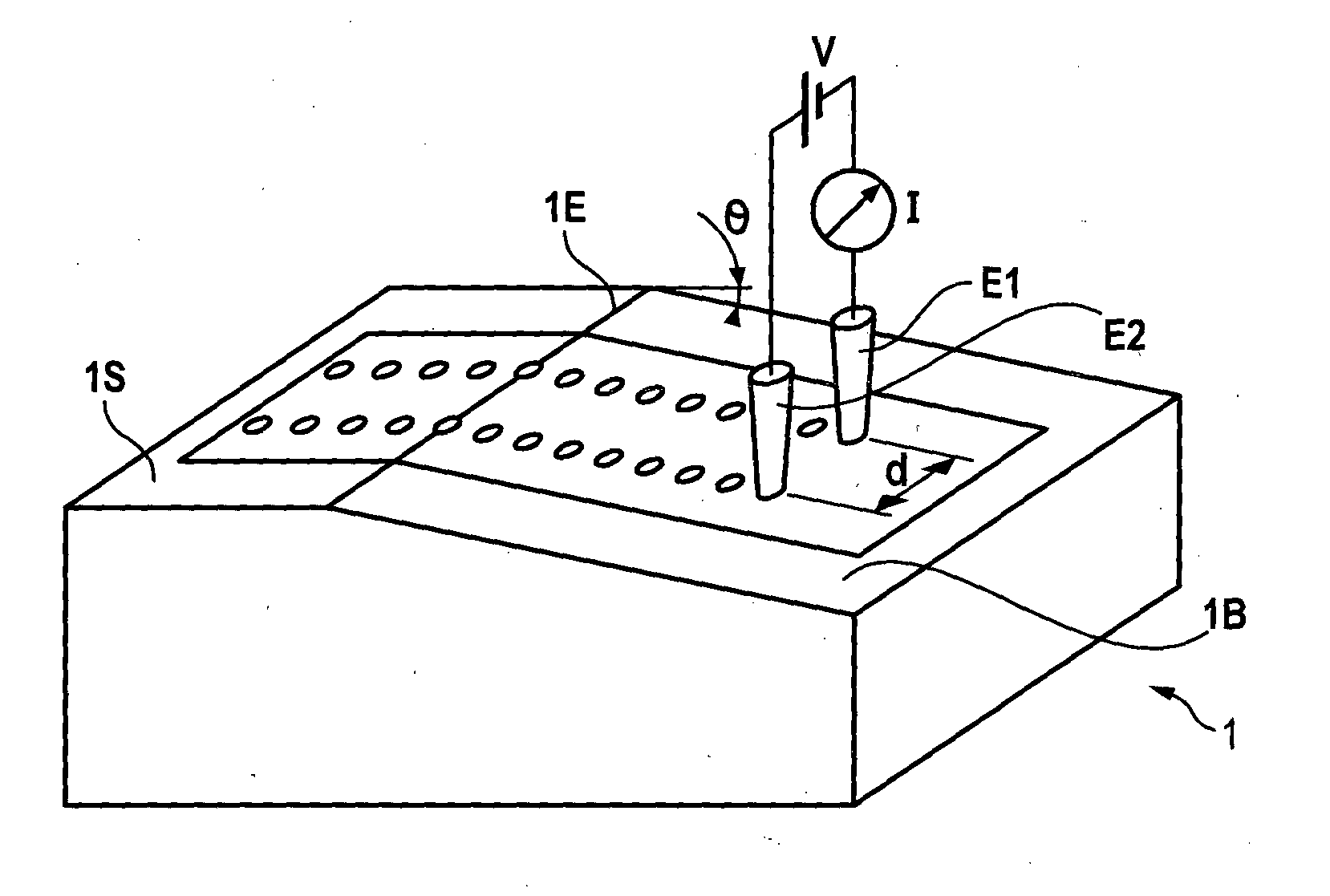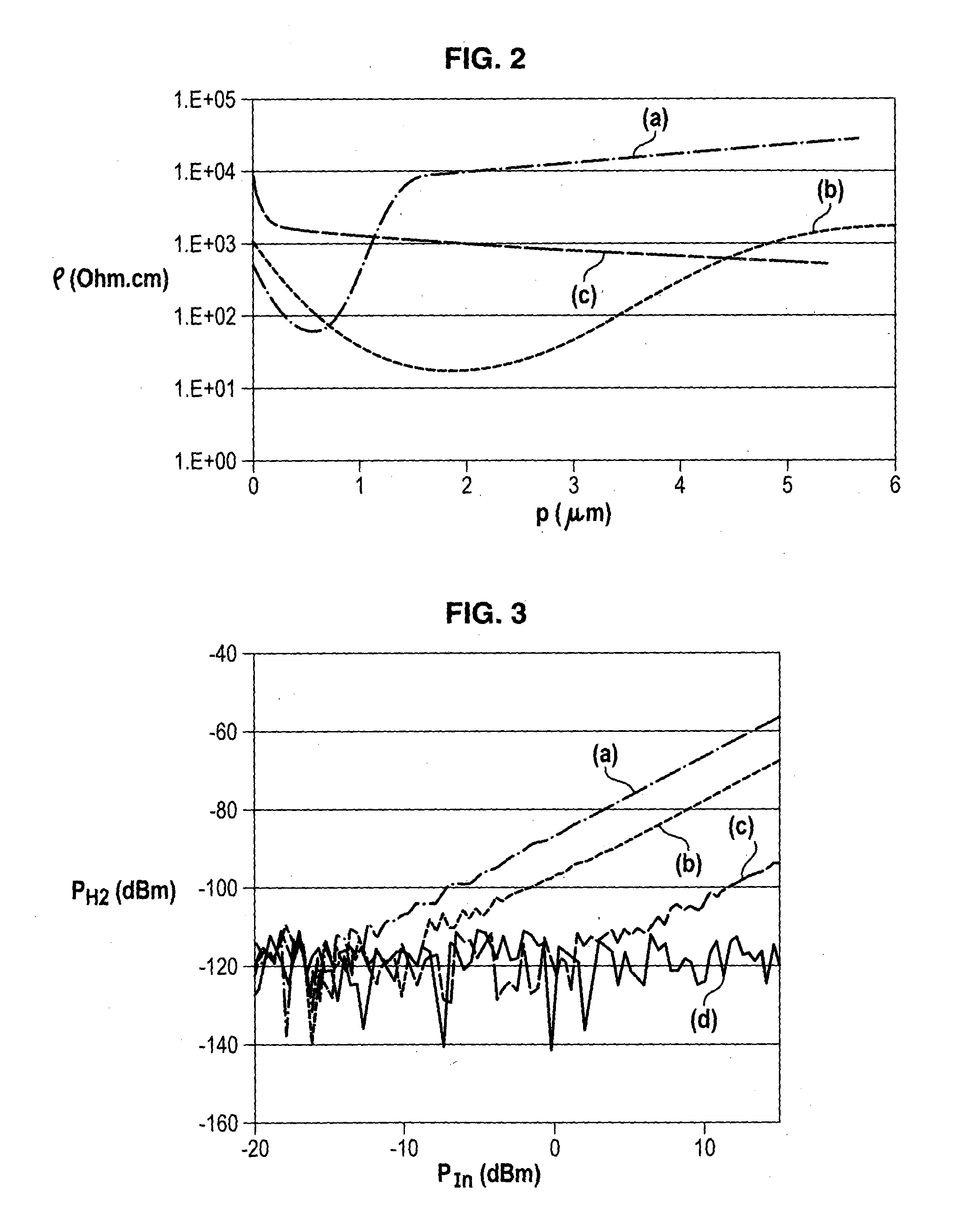Method and device for testing semiconductor subtrates for radiofrequency application
a technology of radiofrequency applications and semiconductor substrates, applied in resistance/reactance/impedence, voltage-current phase angle, instruments, etc., can solve problems such as transmission loss or “insertion loss, parasitic signals that are particularly disadvantageous for radiofrequency applications
- Summary
- Abstract
- Description
- Claims
- Application Information
AI Technical Summary
Benefits of technology
Problems solved by technology
Method used
Image
Examples
Embodiment Construction
[0054]The resistivity profile of the substrate may be determined using any appropriate method.
[0055]Preferably, the spreading resistance profiling (SRP) method is used, the implementation of which is illustrated in FIG. 1A.
[0056]With reference to FIG. 1A, the SRP method is implemented on a semiconductor substrate 1 that has already been polished, from its flat top side 1S (on which the radiofrequency devices are intended to be formed), so as to produce a chamfer 1B extending from an edge stop 1E on the side 1S, the chamfer 1B having an angle θ that allows the desired depth in the substrate 1 to be reached.
[0057]The substrate may be made of any semiconductor material suitable for radiofrequency applications.
[0058]Among preferred materials, mention may be made of high-resistivity (HR) silicon (i.e., having an electrical resistivity higher than 500 ohm·cm, preferably higher than 1000 ohm·cm, and even higher than 3000 ohm·cm).
[0059]The substrate may optionally be a semiconductor-on-insu...
PUM
| Property | Measurement | Unit |
|---|---|---|
| electrical resistivity | aaaaa | aaaaa |
| electrical resistivity | aaaaa | aaaaa |
| electrical resistivity | aaaaa | aaaaa |
Abstract
Description
Claims
Application Information
 Login to View More
Login to View More - R&D
- Intellectual Property
- Life Sciences
- Materials
- Tech Scout
- Unparalleled Data Quality
- Higher Quality Content
- 60% Fewer Hallucinations
Browse by: Latest US Patents, China's latest patents, Technical Efficacy Thesaurus, Application Domain, Technology Topic, Popular Technical Reports.
© 2025 PatSnap. All rights reserved.Legal|Privacy policy|Modern Slavery Act Transparency Statement|Sitemap|About US| Contact US: help@patsnap.com



